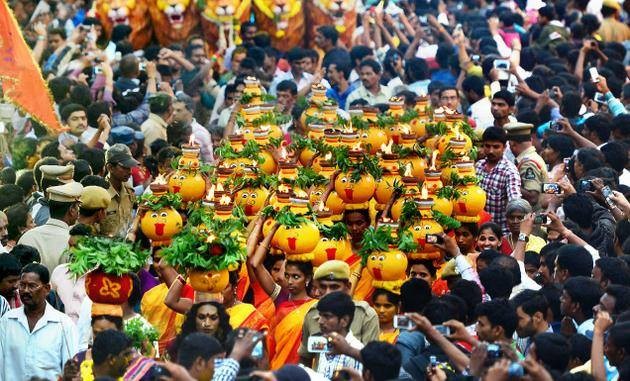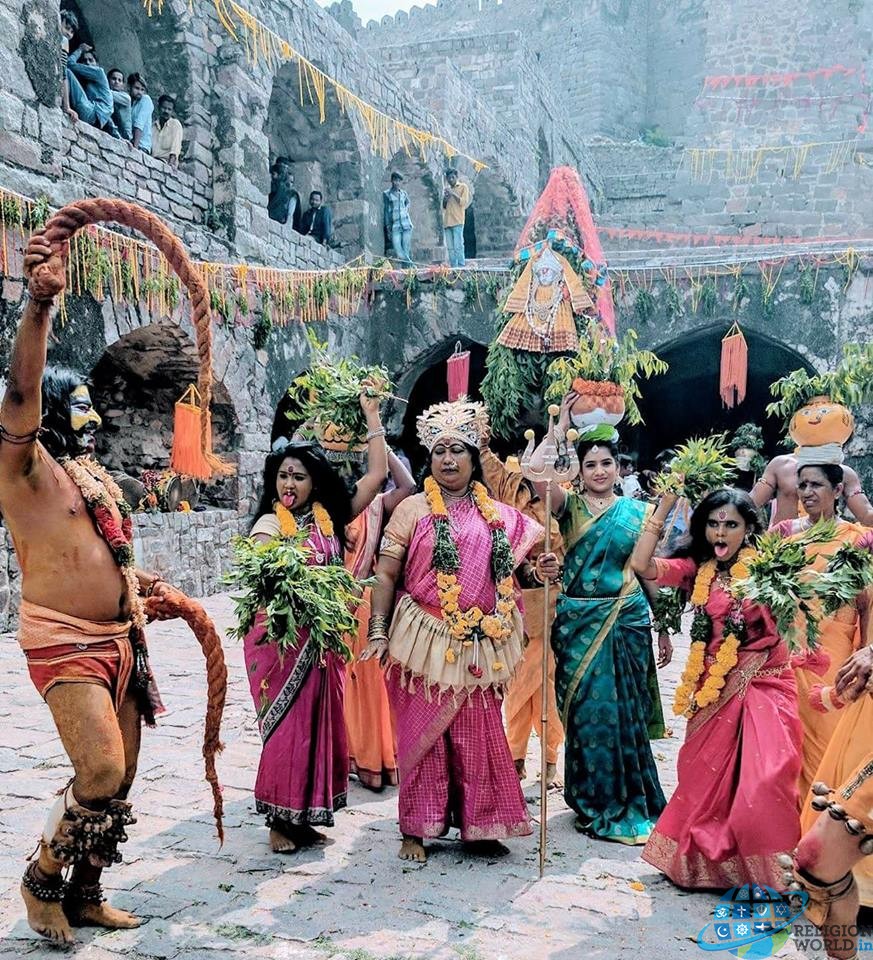Bonalu: Hyderabad”s Very Own Cultural Milieu



Bonalu or Mahankali Jatara is an annual Telangana festival celebrated on Sundays and Mondays of Aashadam month.
“Bonam” means Meal in Telangana Dialect. Women prepare “Paayasam” (Kheer) in an earthen Pot adorned with Neem leaves, Turmeric, Vermilion and a lighted Diya on the top of the Pot and carry it on their heads and make an offering to the Mother Goddess across the Temples.
Bonalu is considered a Thanks giving festival as many offer goat/ hen/ sheep as part of their vow offerings
Bonalu involves the worship of Goddess Durga Maatha in her various forms namely Kaali, Mysamma, Pochamma, Yellamma, Pedamma,Dokkalamma, Ankalamma, Poleramma, Maremma, Nookalamma etc.

 The Bonalu festival has started in 1813 in Hyderabad & Secunderabad and across Telangana. In 1817 a Plague disease broke out in Twin Cities of Hyderabad & Secunderabad with thousands dying.
The Bonalu festival has started in 1813 in Hyderabad & Secunderabad and across Telangana. In 1817 a Plague disease broke out in Twin Cities of Hyderabad & Secunderabad with thousands dying.
With Muslim rulers abolishing the idol worshipping, locals in the times of plague prayed to the Mother Goddess in Mahankaal Temple of Ujjain saying that if people were saved from the epidemic they would install the idol of Mahankali back in their city.
The plague was eventually gone and It is believed by the devotees that goddess Durga/Mahankaali destroyed the disease. The Hindu deities were installed back in the temples and people started celebrating the festival every year since that year.
It is believed that the Goddess comes back to her maternal home during Ashada Maasam, so people come to see her and bring offerings of food to show their love and affection, just as they would prepare a special meal when their own daughters visit them.
Every group of devotees offer a “Thotte”, a small colorful, paper structure supported by sticks as a mark of respect to the goddess.
Pothuraju is the brother of Mother Goddess and is represented in the festival by a well-built, bare-bodied man, wearing a small tightly draped red dhoti and bells on his ankles, and wearing turmeric on his body and vermilion on his forehead. He dances to resounding drums. He is considered the initiator of the festivities and the protector of the community. He leads the tranced female dancers who are under spell of the Mother Goddess to the temple, with lashing whips and emeraldneem leaves (margosa) tied around their waists, accompanied by trumpets and drums.
After the procession of devotees along with the tranced woman enter the premises of the temple, where Rangam takes places, a Tranced women believed to be taken over by the Goddess tells prophesies about the future standing on the wet pots to rythymic beats of drums.









